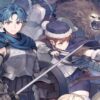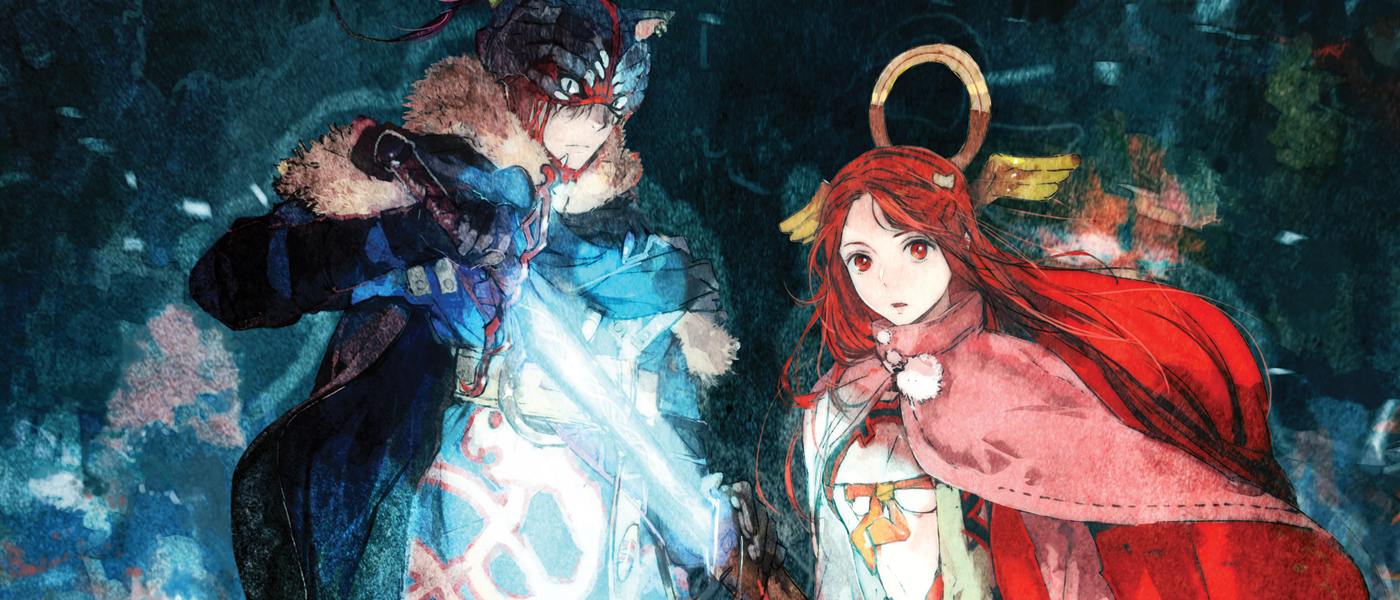Many games over the recent years have attempted to recapture the feel of older generations, with most not quite making the distance and disappointing players instead. Having said that, Tokyo RPG Factory’s first major offering with I Am Setsuna is a standout among the nostalgia-chasing titles. Paying homage to games such as Chrono Trigger, this JRPG is a flashback to a simpler time – but does it fulfil the promises it makes? Once every 10 years, an ancient custom is fulfilled when a young maiden is chosen as a sacrifice, sent to restless demons to keep the world safe. But now the monsters grow restless quicker than before, and the villagers of Nive must prepare a new sacrifice – the young girl, Setsuna. Meanwhile, a young and skilled mercenary by the name of Endir is sent by a mysterious being to assassinate the sacrifice; but instead finds himself part of her sacrificial escort. Meeting new friends and dangerous foes along the way, Setsuna’s journey is destined to end in sacrifice – but will she make it?
Once every 10 years, an ancient custom is fulfilled when a young maiden is chosen as a sacrifice, sent to restless demons to keep the world safe. But now the monsters grow restless quicker than before, and the villagers of Nive must prepare a new sacrifice – the young girl, Setsuna. Meanwhile, a young and skilled mercenary by the name of Endir is sent by a mysterious being to assassinate the sacrifice; but instead finds himself part of her sacrificial escort. Meeting new friends and dangerous foes along the way, Setsuna’s journey is destined to end in sacrifice – but will she make it? I am Setsuna’s art style is very simple and minimal but simultaneously quite stunning, and reminiscent of the games that it seeks to emulate. The only downside is the fact that the majority of the world is either grey or snow-covered, which is used to highlight the grim setting of the state of the world. Amongst the white and grey, there are bursts of colour, and it is here where the game’s radiance truly shines. Towns and locations are crafted individually and reminded me a lot of old RPGs from the SNES era, littered with NPCs and treasure chests to find, but otherwise mostly a set piece. The game is presented in an angled top-down perspective, like the RPGs of old, which further adds to the sense of nostalgia.
I am Setsuna’s art style is very simple and minimal but simultaneously quite stunning, and reminiscent of the games that it seeks to emulate. The only downside is the fact that the majority of the world is either grey or snow-covered, which is used to highlight the grim setting of the state of the world. Amongst the white and grey, there are bursts of colour, and it is here where the game’s radiance truly shines. Towns and locations are crafted individually and reminded me a lot of old RPGs from the SNES era, littered with NPCs and treasure chests to find, but otherwise mostly a set piece. The game is presented in an angled top-down perspective, like the RPGs of old, which further adds to the sense of nostalgia. There are no overly complicated menus here, in fact, there is barely anything aside from battle screens and the customization screen. The soundtrack to the game is composed almost solely of piano, basically sounding as if someone is playing a score right next to you as you play. This is both great at first, and eventually grating (when you hear a theme that annoys you that loops over and over), but fits the game quite well. The option for in-game voices is there too, but don’t expect to understand them as they are Japanese.
There are no overly complicated menus here, in fact, there is barely anything aside from battle screens and the customization screen. The soundtrack to the game is composed almost solely of piano, basically sounding as if someone is playing a score right next to you as you play. This is both great at first, and eventually grating (when you hear a theme that annoys you that loops over and over), but fits the game quite well. The option for in-game voices is there too, but don’t expect to understand them as they are Japanese. Sticking with the nostalgic aspect, Tokyo RPG Factory made it astoundingly clear that the heaviest influence on them was Chrono Trigger, and it is almost reminiscent right down to the in-game battles. Presented with a world map that players traverse across, each town and location is travelled to by walking across it. Towns are rife with NPCs and shopkeeps ready to sell you things, and hidden items litter the streets and paths (also accompanied by a strange siren noise that it took me a while to figure out what it was). Starting off with Endir, your (quite generic) protagonist, you have the option of switching units when you recruit more along the way. Other features open up, like an airship for faster travel across the map.
Sticking with the nostalgic aspect, Tokyo RPG Factory made it astoundingly clear that the heaviest influence on them was Chrono Trigger, and it is almost reminiscent right down to the in-game battles. Presented with a world map that players traverse across, each town and location is travelled to by walking across it. Towns are rife with NPCs and shopkeeps ready to sell you things, and hidden items litter the streets and paths (also accompanied by a strange siren noise that it took me a while to figure out what it was). Starting off with Endir, your (quite generic) protagonist, you have the option of switching units when you recruit more along the way. Other features open up, like an airship for faster travel across the map. Besides the repetitive music, battles are relatively simple and fun. Enemies are visible when travelling through environments, and battles transition seamlessly from gameplay. The battle system itself is even reminiscent of prior games with an ‘active time battle’ system employed – each unit has a meter that recharges and allows them to either attach, or use a tech – which consists of a special attack, magic, or healing. These tech attacks are allocated to units through ‘spiritnite’, a collectible item that unlocks new tech moves, and consumes MP when used. When two characters’ battle meters hit maximum, they can also perform a combo attack which makes for a stronger hit (but uses slightly more MP). Momentum attacks are introduced when you attack and defend enough times in a battle, and add extra attacking power, but are timed by button presses when attacking.
Besides the repetitive music, battles are relatively simple and fun. Enemies are visible when travelling through environments, and battles transition seamlessly from gameplay. The battle system itself is even reminiscent of prior games with an ‘active time battle’ system employed – each unit has a meter that recharges and allows them to either attach, or use a tech – which consists of a special attack, magic, or healing. These tech attacks are allocated to units through ‘spiritnite’, a collectible item that unlocks new tech moves, and consumes MP when used. When two characters’ battle meters hit maximum, they can also perform a combo attack which makes for a stronger hit (but uses slightly more MP). Momentum attacks are introduced when you attack and defend enough times in a battle, and add extra attacking power, but are timed by button presses when attacking. The biggest downside to the battle system is that some aspects seem overpowered, while others are quite nondescript and convoluted for what they are. Simplifying it a little more would benefit the game overall.
The biggest downside to the battle system is that some aspects seem overpowered, while others are quite nondescript and convoluted for what they are. Simplifying it a little more would benefit the game overall.
Other than that, save points are few and far between (especially when you’re busy taking in everything the world has to offer, though you can save on the overworld map through the menu), and travelling might seem a bit tedious until you manage to get to the airship to get around. The first console I ever owned was a Super Nintendo Entertainment System, back in 1996. Occasionally, I’ll get it out and play it on an old CRT television, just to relive the memories of the countless RPGs played on it.
The first console I ever owned was a Super Nintendo Entertainment System, back in 1996. Occasionally, I’ll get it out and play it on an old CRT television, just to relive the memories of the countless RPGs played on it.
With I am Setsuna, I found the same kind of memories flooding back even though the game is recent; which is exactly what Tokyo RPG Factory has set out to do. With a mix of sombre and emotional storytelling, and a simplistic battle and gameplay style, I am Setsuna is a wonderful tribute to the games of yesteryear. Only let down by minor aspects (like seriously, Chrono Trigger was a long time ago, you CAN improve on things) such as battle balance and extremely repetitive locations, I am Setsuna is a great RPG that will make you reminisce about the past.
The PS4 version was primarily tested for the purpose of this review.



